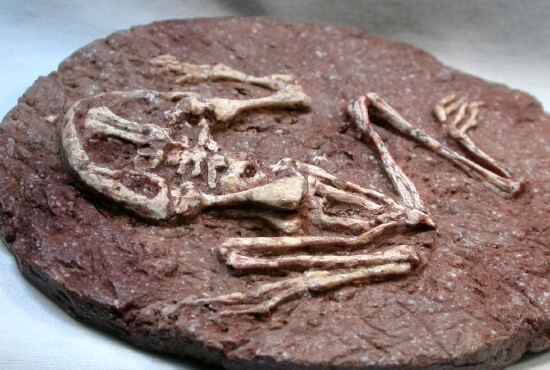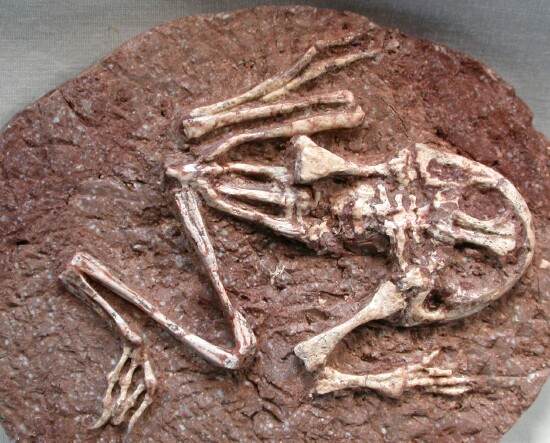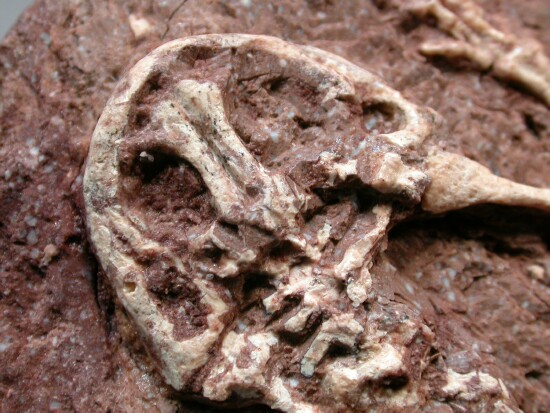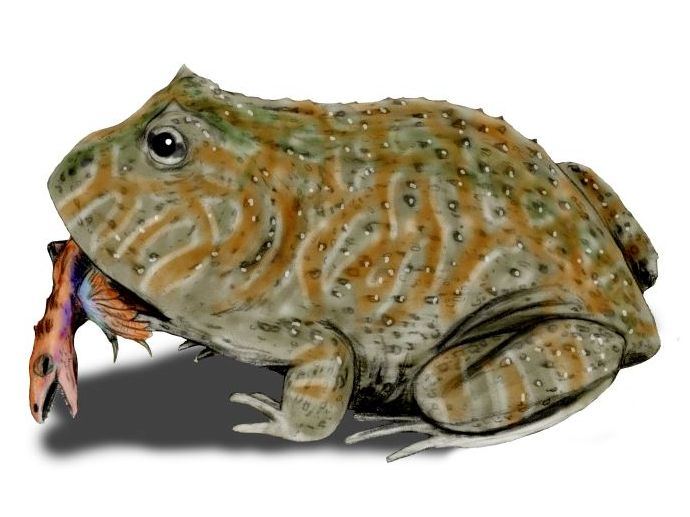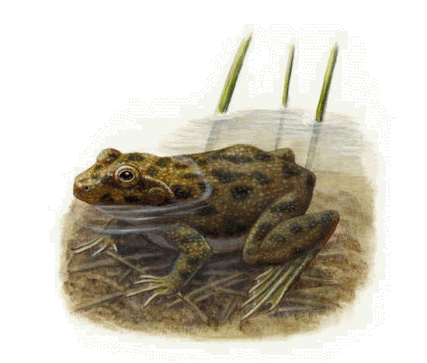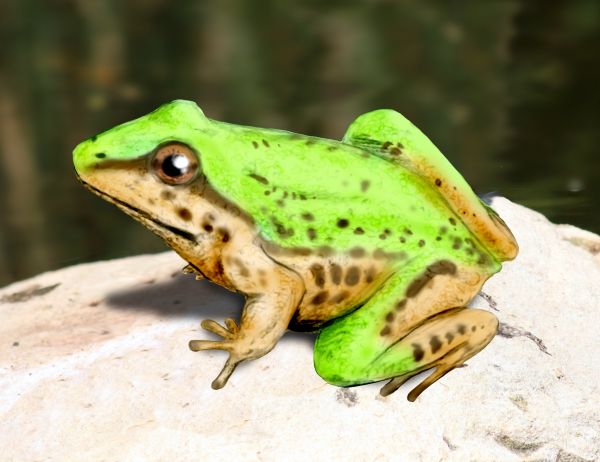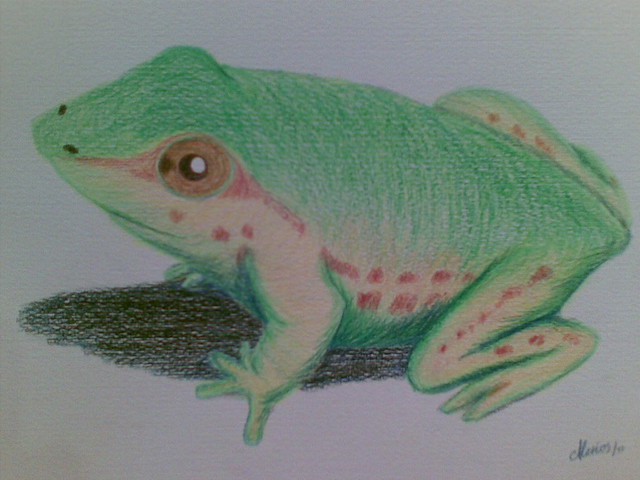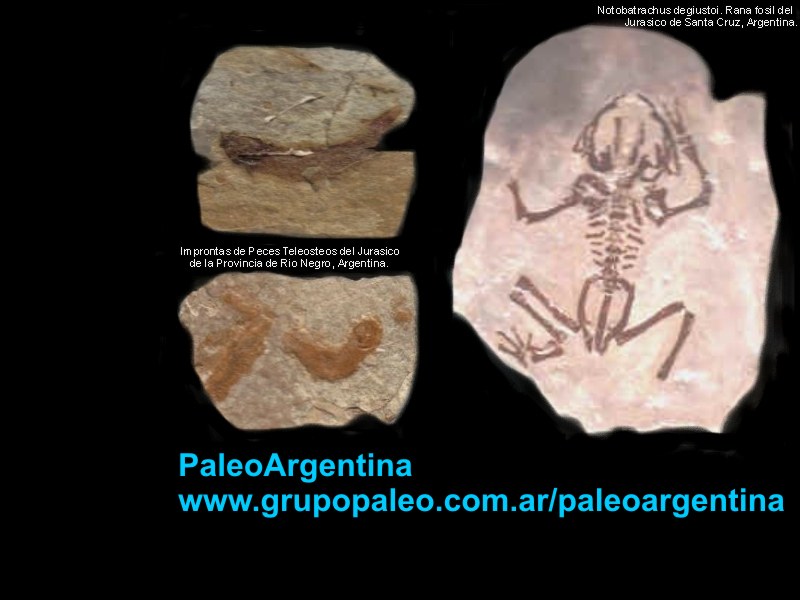[Recent Entries][Archive][Friends][User Info]
Below are the 6 most recent journal entries recorded in the "Сообщество, посвящённое ра" journal:| June 9th, 2013 | |
|---|---|
| 06:28 pm [industrialterro] [Link] |
Callobatrachus Callobatrachus is an extinct genus of discoglossoid anuran amphibian from the Early Cretaceous-age Yixian Formation of Liaoning, China. It was described in 1999 by K. Gao of the American Museum of Natural History and Y. Wang of the Chinese Academy of Sciences. Discovered in the Sihetun locality of the western part of Liaoning province, in the lower part of the Yixian Formation, the fossil dates to approximately 124.6 Ma. Callobatrachus is considered to be the most basal member of Discoglossidae based on phylogenetic analysis. As frogs are rarely found as articulated skeletons in the fossil record, the discovery of this new taxon has provided important insight into anuran evolution. The holotype, IVPP V11525, is known from a nearly complete skeleton exposed in a dorsal view on a shale slab. Its total body length (from snout to vent) is estimated at approximately 94 mm. It differs morphologically in many respects from all other discoglossoids, including the number of presacral vertebrae (9 instead of the usual 8) and other primitive characters. Although it had a mosaic of primitive and derived characters, it can be unequivocally placed as the most basal taxon of the clade. This shows that the taxon diverged early from the stem and evolved separately as a distinct lineage by the Early Cretaceous in East Asia. The skull is described as being short and wide and is well preserved. The maxillary region is less well-preserved but it can be determined that each premaxilla bears 18-20 slender and conical teeth, and the maxilla bears approximately 40-50 fine pedicellate teeth. The vertebral column consists of nine presacral vertebrae, a single sacral vertebra, and a free urostyle. Three pairs of ribs were found associated with presacrals II-IV. The hind limbs are remarkably well-preserved and are slenderly built, with an approximate total length of 116 mm. Its hind feet have the phalangeal formula 2-2-3-4-3, with its fourth digit being the longest at 27 mm. Before its description, Callobatrachus was announced in Chinese media as "sanyanlichan".
Ископаемые останки (1, 2, 3, 4):
Tags: Бесхвостые, Мел. Вымершие амфибии |
| 05:56 pm [industrialterro] [Link] |
Beelzebufo Beelzebufo ampinga — гигантская ископаемая лягушка из семейства Ceratophryidae. Обитала на Мадагаскаре 70,6—65,5 млн лет назад (поздний мел). Описана в 2008 году. Название Beelzebufo происходит от греч. «Beelzebub» («Вельзевул»), что означает «дьявол», и латин. «bufo» — «жаба». Видовое название ampinga означает «щит» и соответствует защитному твердому покрову некоторых частей тела лягушки. Beelzebufo ampinga возможно была самой большой лягушкой из всех когда-либо существовавших, она достигала 40 см в длину (со сложенными ногами) и весила предположительно 4,5 кг — больше любой современной лягушки, в том числе самой большой из них лягушки-голиаф, которая достигает 32 см, и всех других лягушек, останки которых когда-либо были найдены. У нее было мощное телосложение, короткие ноги и очень широкий рот с мощными челюстями. Ближайшие современные родственники — лягушки-рогатки, обитающие в Южной Америке. Возможно, так же как и у них у Beelzebufo на голове были рога. Предполагают, что Beelzebufo ampinga населяла полузасушливые биотопы, была такой же агрессивной, как и современные лягушки-рогатки, так же нападала на добычу из засады и охотилась на мелких животных, скорее всего, небольших позвоночных, таких как мелкие млекопитающие, ящерицы и лягушки, а возможно, учитывая ее размеры, питалась и новорожденными динозаврами. The species may have grown to over 40 centimetres (16 in) and 4 kilograms (9 lb) — larger than any living frogs, including the largest known species, the goliath frog, which can be up to 32 centimetres (13 in). The bones of the skull roof shows a rugous external surface, indicating that at least parts of the head may have borne scutes. Although the fossils of Beelzebufo appear in what is now Madagascar, which, still attached to India, had split from the coast of Somalia in the earliest stage of the late Jurassic, it superficially resembles its closest living relatives, the Ceratophryinae or horned toads of South America, of which the largest today grow to 15 cm (6 in) long. As West Gondwana (South America) rifted away from East Gondwana, opening from the north and spreading southward, open marine conditions in the widening South Atlantic obtained by about 110 mya, isolating the amphibians on either side; the last common ancestor of Beelzebufo and the South American ceratophryinae is most likely to have existed before that date and probably before seafloor-spreading demonstrates the earlier isolation of Madagascar-India, a very long time undocumented by fossils. Alternatively the history of archaeogeography could be rewritten: Richard Lane, program director in NSF's Division of Earth Sciences, said "The occurrence of this frog in Madagascar and its relatives' existence in South America provides strong evidence that the supercontinent Gondwana 'disassembled' during the latest part of the Cretaceous." ( Read More )
Размеры тела в сравнении с человеком:
Размеры тела в сравнении с современной лягушкой-бык:
Tags: Бесхвостые, Вымершие амфибии, Мел |
| April 7th, 2012 | |
| 02:25 pm [industrialterro] [Link] |
Vieraella Vieraella is an extinct genus of frog from the Jurassic period of Argentina, and the oldest true frog known. Despite living around 200 million years ago, Vieraella was anatomically very similar to modern frogs. For example, its hind legs were adapted for jumping, and the skull already possessed the lattice-like form found in modern species. It was, however, an unusually small frog, measuring only 3 centimetres (1.2 in) in length. Although older frog-like creatures are known, such as Triadobatrachus, these possessed many primitive characteristics, and cannot be said to be "true" frogs.
Tags: Бесхвостые, Вымершие амфибии, Юра |
| 02:03 pm [industrialterro] [Link] |
Prosalirus Prosalirus bitis is the name given to a fossil proto-frog found in Arizona in 1995, which has primitive features, but has mostly lost the salamander-like traits of its ancestors. It has a skeleton designed to absorb the force of jumping with its hind legs and tail. It is thought to have lived 190 million years ago, well before the first known modern frog, the Sanyanlichan. As of 2009, only three Prosalirus skeletons have been discovered.
Tags: Бесхвостые, Вымершие амфибии, Юра |
| 01:55 pm [industrialterro] [Link] |
Notobatrachus Notobatrachus is an extinct genus of frog from the middle Jurassic Cañadon Asfalto Formation of Argentina. В поздней юре ископаемые остатки бесхвостых становятся более разнообразными таксономически и географически. Eobatrachus и Comobatrachus известны из Вайоминга (Соединенные Штаты), а Enneabatrachus из Вайоминга и Юры (Соединенные Штаты); все несколько похожи. Notobatrachus, из нескольких мест из Патагонии в Аргентине является одной из наиболее важных среднеюрских находок, потому что представлен полными сочлененными скелетами многих особей, включая молодых и полувзрослых. Это бесхвостое было крупным, достигая длины от рыла до ануса 5.7 дюймов (14.5 см). Оно имело несколько примитивных особенностей, включая свободные ребра у нескольких позвонков, слаборазвитый крестец, относительно короткий тазовый пояс и толстые, относительно короткие задние конечности. Это бесхвостое считается предком всех современных бесхвостых.
Tags: Бесхвостые, Вымершие амфибии, Юра |
| January 10th, 2012 | |
| 06:48 pm [industrialterro] [Link] |
Triadobatrachus Triadobatrachus ('triple-frog') is an extinct genus of frog-like amphibian, including only one known species, Triadobatrachus massinoti. It is the oldest frog known to science, and an excellent example of a transitional fossil. It lived during the Early Triassic, in what is now Madagascar. Triadobatrachus was 10 centimetres (3.9 in) long, and still retained many primitive characteristics, such as possessing fourteen vertebrae, where modern frogs have only four to nine. Six of these vertebrae formed a short tail, which the animal retained as an adult. It probably swam by kicking its hind legs, although it could not jump, as most modern frogs can. Its skull resembled that of modern frogs, consisting of a latticework of thin bones separated by large openings. As evidenced by its large ear openings, Triadobatrachus possessed good hearing. This creature, or a cousin, evolved eventually into modern frogs, the earliest example of which is Sanyanlichan, millions of years later in the late Jurassic. It was first discovered on 1937, when Adrien Massinot, near the village of Betsieka in northern Madagascar, found an almost complete skeleton. The animal must have fossilized soon after its death, because all bones lay in their natural position. Only the anterior part of the skull and the ends of the limbs were missing. Although it was found in marine deposits, the general structure of Triadobatrachus shows that it may have lived for part of the time on land and breathed air. Its proximity to the mainland is further borne out by the remains of terrestrial plants found together with it.
Tags: Бесхвостые, Вымершие амфибии, Триас |

